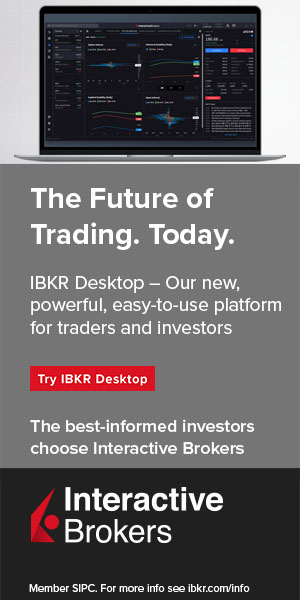A Rule-based Swing Trading Method
“I’ve become more and more selective, sometimes to a fault. I used to always want to be in the market. I’ve learned that you’re much better off letting the market prove itself before entering.”*
Snapshot of the Trading Method
Strategy name: 48-hour Movement Trader
Suitability: Good for both full-time and part-time traders
Time frame: Hourly charts
Indicators: SMA 20 and RSI 20
Instruments: Use pairs and crosses that tend to trend well, e.g. EURJPY, AUDJPY, EURUSD, AUDUSD, EURNZD, EURCAD, GBPUSD, GBPCHF, etc
Setup: Go long when the price is above the SMA and the RSI is above the level 60. Go short when the price is below the SMA and the RSI is below the level 40.
Order type: Instant executions
Stop loss: 90 pips from the entry price
Take profit: 180 pips from the entry price
Risk-to-reward ratio: 1:2
Position sizing: Please use 0.01 lots for each $2000 (and thus making it 0.05 lots for $10000); or 0.1 lots for each 20000 cents in a cent account (making it 0.5 lots for each 100000 cents)
Breakeven: You may move your stop loss to breakeven after you have gained about 50 pips.
Exit rule: Either the initial stop or breakeven stop or the target will be hit within 48 hours. Close an open position when it is 48 trading hours old – whether negative or positive
Maximum trade duration: 48 trading hours
Survivability: Long term success is possible, even with 50% hit rate
A Few Trade Examples
After the strategy has been set up on a chart, the chart can be moved backwards to see how the past signals unfolded. In addition, you are advised to test the strategy in a simulation mode for at least four months before going live. Testing in simulation mode greatly helps as you experience first-hand how the strategy behaves in the markets. Running real-world simulations is definitely beneficial when compared to mere back-testing. In the trade examples below, spreads were no considered. In each of the accompanying charts, the vertical red line on the right shows where a position was opened, while the vertical red line on the left shows where it was exited.
Example 1: In June 2012, the major trend on the EURNZD was bearish. Our entry criteria were met on June 8, 2012, and a short position was opened. You would notice that there were minor pullbacks and a gap during the course of this trade (which could test our emotions), but it was great to stick to the exit rules while the trade was running. This was a nice trade.
Instrument:
Order: Sell
Entry date: June 8, 2012
Entry price: 1.6280
Stop loss: 1.6370
Take profit: 1.6100
Exit date: June 12, 2012
Exit price: 1.6100
Status: Closed
Profit/loss: 180 pips
Example 2: On March 13, 2012, a bullish signal was generated on the GBPCHF. Please note that this cross experienced some consolidation prior to this, especially a few days before this particular signal. This trading method can be used to avoid a range-bound market in that the RSI would neither be above the level 60, nor be below the level 40 when there is consolidation. This trade also worked well.
Instrument: GBPCHF
Order: Buy
Entry date: March 13, 2012
Entry price: 1.4400
Stop loss: 1.4310
Take profit: 1.4580
Exit date: March 14, 2012
Exit price: 1.4580
Status: Closed
Profit/loss: 180 pips
Example 3: This example shows a trade that first went in the anticipated direction, failed to reach its target, but which did not go negative. The trade first went in the forecasted direction. Once the price had fallen by 50 pips, the stop loss was adjusted to be equal to the entry price (breakeven). The price hit a major demand zone and was shot up, therefore hitting the then current stop (as distinct from the initial stop). The trade was prevented from turning into a loss.
Instrument: AUDUSD
Order: Sell
Entry date: June 1, 2012
Entry price: 0.9682
Stop loss: 0.9772
Breakeven: 0.9682
Take profit: 0.9502
Exit date: June 1, 2012
Exit price: 0.9682
Status: Closed
Profit/loss: 0 pips
Conclusion
With the kind of trading approach discussed here, signals should be taken with unflagging willingness and you ought not to prevaricate. A trading week invariably proffers certain speculative signals, but speculators ought to possess valid methods for opening and closing trades at the expiration of the speculation period, whether profitable or unprofitable. You would do well to elect a technique that fits you the most and allow intrepidity and be unperturbed enough to stick to your clear-cut rule. In case a trader still anticipates gains to rain down, the realization of this may be nearer than imagined. What should you do? Please commit yourself to trading education and always be on look for a wealth of trading information, and be resolute to leave indelible footprints in the trading world.
The article is ended by the quotes below:
“Each trade can be viewed as one of many that you will take in your career. If it works, great. If not, that’s okay; you’re still in the game. There will be others.”*
NB: This article was originally written by Azeez Mustapha, and published in Futures Magazine. It is reproduced here with permission from Futures Magazine.
*The quotes at the beginning and the end of this final article are from Dave Landry. He was interviewed in TRADERS’ Magazine December 2014 (www.tradersonline-mag.com). The quotes are not part of the original article.
Source: Tallinex.com
What Super Traders Don’t Want You To Know: Super Traders


 Hot Features
Hot Features











